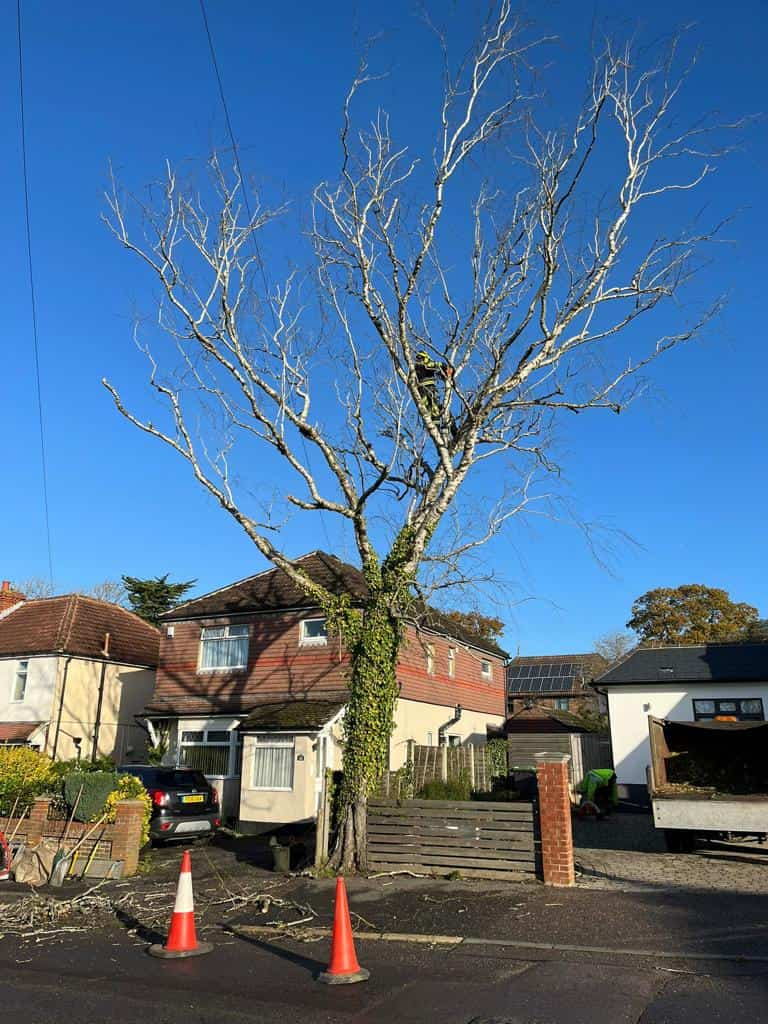Tree felling is a delicate subject for homeowners, especially when it involves trees that have been part of the landscape for many years. While trees provide essential benefits like shade, aesthetics, and biodiversity, there are times when removal becomes necessary for safety, health, or environmental reasons. Understanding the ethical side of tree felling is crucial, as responsible tree surgery can ensure a balance between maintaining your garden’s beauty and protecting your property. In this article, we will explore how to determine when a tree must be removed and the ethical considerations involved in making that decision.
Why You Might Need to Fell a Tree
There are various reasons why a tree might need to be removed. These include health concerns, safety hazards, and environmental impact. It’s essential to assess the tree’s condition thoroughly before deciding to fell it, and in many cases, removal may be the only viable option.
1. Safety Concerns
A tree with significant structural issues poses a serious risk to your home and family. Broken branches, a leaning tree, or roots that threaten foundations can all be signs that a tree is no longer safe. If a tree’s integrity is compromised, it could fall unexpectedly, causing damage to property or even injury. In these cases, the safety of those around the tree must come first, and felling may be the best solution.
2. Health and Disease
When a tree is infected by pests or diseases, it may be necessary to remove it before the problem spreads. Fungal diseases like honey fungus, for example, can weaken a tree’s roots and trunk, making it unstable. Trees that are dying or already dead can become a breeding ground for insects and fungi, further exacerbating environmental concerns. Removing unhealthy trees not only prevents further damage but can also protect other nearby trees from similar threats.
3. Overcrowding and Aesthetic Reasons
Sometimes, a tree is simply in the way of other plants or structures. In gardens with overcrowded trees, one may need to be removed to give the remaining plants space to thrive. Additionally, trees that are poorly placed or grow too large for their space may interfere with your home’s architecture, blocking sunlight or obstructing views. In such cases, felling a tree can help restore balance and enhance the overall aesthetics of your garden.
The Ethical Considerations of Tree Felling
While removing a tree is sometimes necessary, it should never be done lightly. There are ethical factors to consider to ensure that the removal is justified and that the process is carried out responsibly.
1. Preserving Tree Life Where Possible
Before opting for tree felling, consider all other options for preservation. In some cases, pruning, crown reduction, or cabling can solve problems without needing to remove the tree entirely. If the tree’s health is compromised, the right care and treatment may enable it to recover, giving it a chance to continue thriving in the environment.
2. Environmental Impact
Every tree plays a role in the local ecosystem. Trees provide habitat for wildlife, support biodiversity, and help improve air quality. When considering removal, think about the broader environmental impact and whether the tree’s felling will disrupt local wildlife or the ecosystem. If removal is necessary, planting a new tree or supporting local biodiversity initiatives can help balance the loss of the tree.
3. Legal Considerations
It is essential to check local regulations and acquire the necessary permissions before removing a tree, especially if it is in a protected area or has significant historical value. Felling a tree without the proper consent can result in legal consequences. A professional tree surgeon can guide you through these legal considerations to ensure that the process follows proper guidelines.
How to Approach Tree Felling Responsibly
When you decide that tree felling is the right course of action, it’s crucial to approach the process with care and responsibility.
1. Hire a Professional Tree Surgeon
Felling a tree should never be done without proper knowledge and expertise. A qualified tree surgeon will assess the tree’s condition, consider safety aspects, and ensure the removal is carried out safely and ethically. Additionally, professional tree surgeons can ensure that the site is cleared responsibly, with minimal environmental impact.
2. Replanting and Reforesting
In many cases, it’s ethical to plant a new tree or contribute to local reforestation efforts after a tree has been felled. This helps offset the environmental impact of the removal and supports the long-term health of the local ecosystem.
3. Recycling and Repurposing Materials
Instead of leaving the felled tree to decompose, it can be repurposed. Wood from the tree can be used for various purposes, from firewood to furniture, creating a more sustainable outcome from the process.
Conclusion
Tree felling is not a decision to be taken lightly, but sometimes it is necessary for the safety, health, and well-being of your property and the local environment. By considering the ethical aspects of tree removal, you ensure that it is done responsibly and with respect for nature. Always consult with a professional tree surgeon to make an informed decision that protects both your property and the environment.
If you’re in Cobham, Surrey, and need expert tree surgery services, contact NS Tree Surgery Cobham today. We can help you assess the health and safety of your trees, ensuring any necessary felling is done safely and ethically.
Call us on: 01372 679 098
Click here to find out more about NS Tree Surgery Cobham
Click here to complete our contact form and see how we can help with your tree needs.

